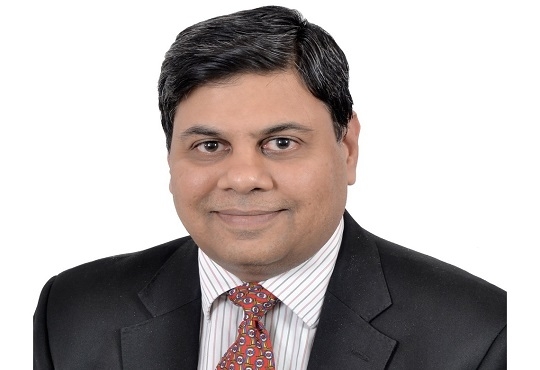
Financial Services Industry in India To Brace For Cyber Attack Onslaught in 2017
CIOReview Team | Wednesday, 15 March 2017, 11:36 IST
 The financial services sector is likely to remain a top target for cybercriminals in 2017 due to the sensitive nature and value of financial data the industry holds, according to global leader in high-performance cyber security solutions Fortinet.
The financial services sector is likely to remain a top target for cybercriminals in 2017 due to the sensitive nature and value of financial data the industry holds, according to global leader in high-performance cyber security solutions Fortinet.
“The financial industry continues to be a prime target given the sensitive nature of its data that is extremely valuable on the online black market. Cybercriminals are also capitalizing on new ways to exploit increasingly complex network environments in FSI and developing new techniques to bypass security and evade detection,” said Rajesh Maurya, Regional Vice President, India & SAARC, Fortinet. “As the attacks grow in both number and complexity, financial services institutions will have to prepare to better detect and mitigate threats in order to protect their organization.”
Fortinet offers the Top 5 Cybersecurity Threat Predictions for the financial services industry in 2017:
1. Further Securing the Cloud
For years, the financial services industry has trailed behind other industries when it comes to moving data to the cloud. Information security concerns remain but recently there have been moves by large FSI organisations to public cloud service providers like AWS and Rackspace. Today’s public clouds offer scalability, flexibility, and reliability, while also allowing organizations to only pay for the services being used. All of these factors can lead to increased savings and organizational effectiveness, but as always, security needs to remain at top of mind.
As cloud adoption grows across the industry in 2017, organizations need to ensure the data being passed to the cloud is put through the same scrutiny as all other data. Visibility into that data needs to be maintained, and security policies and enforcement must be applied consistently regardless of the location of that data. Expect to see cloud security solutions continue to evolve and make protection simpler and more effective.
2. Two-Factor Authentication (2FA)
There were a number of large banks that experienced data breaches in 2016. In a few different cases, cybercriminals stole traditional login and password information to conduct fraudulent transactions, which damaged the business’ reputation.
To better combat this existing problem, Fortinet expects 2FA to come to the forefront as an additional layer of defence in 2017. 2FA combines passwords, which the user already knows, with another type of authentication that is connected to something the user has, for instance a One-Time PIN (OTP) sent to their mobile phone.
This solution keeps traditional login and security measures in place while giving customers (and financial organizations) stronger security when managing sensitive financial transactions.
3. Securing the Internet of Things (IoT)
The IoT’s prowess is impossible to ignore with 24 billion IoT devices expected to be installed across the world by 2020, according to Gartner. The insurance industry in particular is already relying on IoT to align driving behaviour with premium rates by leveraging data from in-vehicle telecommunication devices in some countries. The banking industry is also expected to improve the experience for retail customers with IoT initiatives like personalized customer rewards.
Regardless of how the data is being accessed and shared, it must be secured in order to protect customers. Fortinet expects financial services organizations to control network access, segment traffic, and invest in solutions that can help them manage the complex nature of today’s cybersecurity landscape.
4. The Government Will Become More Involved
Cybersecurity will remain a focal point for government action in 2017, and organizations will need to be ready to meet these standards. With failure to adhere to regulations resulting in costly penalties and damaged reputations, financial services institutions will likely look to investing in additional cybersecurity solutions to meet these increasing demands.
5. Smarter Attacks Will Call for Smarter Solutions
As cybersecurity solutions evolve, so too will the complexity of the attacks being developed. In 2017, financial services organizations should consider deploying a Security Fabric architecture that provides awareness and visibility into all security elements, integrates them into a single, operationalized defence and response system, and allows for centralized orchestration and automation through a single management platform. This Fabric should also provide open APIs (Application Program Interface) to enable seamless integration and intelligence sharing with other third-party network and security solutions.
CIO Viewpoint
From VPNs to Zero Trust: The Transition to a...
By Shankar Venkatesan, Senior IT Leader, Avalon Technologies
The Cyber Security Spar in Integrating IT and...
By Vimal Goel, CIO, HPCL-Mittal Energy
Towards Cyber Resilience: A Data-Centric...
By Puneet Gupta, Vice President & Managing Director, NetApp India/SAARC
CXO Insights
Emerging Trends, Challenges & Future Prospects...
By Sujoy Brahmachari, CIO & CISO, Rosmerta Technologies
Exploring Data-First Security and Automation in...
By Maheswaran S, Country Manager - S.Asia, Varonis Systems
Securing IT-OT Converged Infrastructure




.jpg)
.jpg)
.jpg)







